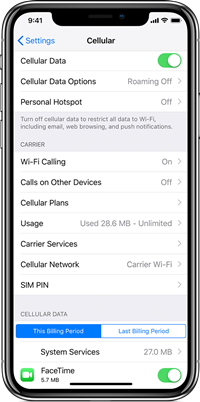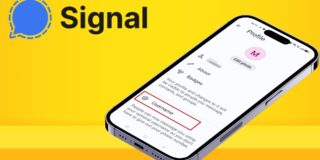What Is Data Roaming

If you’re planning a trip abroad, it is vital to inform yourself about data roaming. Potentially, this little setting in your smartphone could make or break your vacation. Why is it so important and what’s all the fuss about it? Keep reading to find out all you need to know about data roaming.
Roaming 101
In a nutshell, roaming is when your phone loses the signal and leaves its network. However, it doesn’t apply to losing signal within the country; it is the loss of signal when you leave the country. In that sense, data roaming is the data you receive while outside of the reach of your network.
The roaming data might include loaded website pages, received WhatsApp texts and images, or downloaded apps and updates. It also includes all other data you receive while roaming. That is, if the mobile data is turned on while you’re out of the country.
How Does It Work?
Let’s illustrate this with an example. For the purposes of this example, we’ll assume that you’re a citizen of the United States and that your mobile provider is Liberty Telecommunications. We will also assume that you have 4G data along with phone signal.

Now, you’ve decided to leave the country for a hard-earned vacation. French Riviera sounds good, and you plan on taking your phone with you. You want to catch up with your favorite Netflix shows and radio podcasts while on vacation.
Since the Liberty Telecommunications doesn’t actually operate in France, you might be in a bit of a pickle. You will have two options here – to swap out your SIM for a French one (if your phone’s unlocked) or switch to a French provider while you’re there.
Luckily, Liberty Telecommunications had signed a contract with L.E.F. Mobile. This means that Liberty Communications customers will receive signal and data from L.E.F. Mobile while in France. Likewise, France Mobile’s customers that come to America will be taken care of by Liberty Telecommunications.
However, when you get to France, your phone might not automatically switch networks. In that case, you’ll have to switch to L.E.F. Mobile network manually. Your network may look like this: L.E.F. (Liberty Telecommunications), signifying that you’re a Liberty customer that’s using the L.E.F. Mobile network. This also means that you won’t have to swap out your US SIM card for a French one.
Costs and Charges
Now comes the tricky part, the costs and the charges. Although it is very useful at times, data roaming can easily rack up your phone bill if you’re not careful. That’s because you’ll be paying for both the L.E.F. Mobile’s and Liberty Telecommunications’ services.
That’s the reason why the vast majority of smartphones have the data roaming option disabled by default. That’s also why your phone will warn you of additional costs when you try to turn on mobile roaming data.

Since Liberty Communications works with many local providers around the world, the prices for text messages, calls, and mobile data will vary. To find out how much you’ll be charged for each minute, text, and megabyte, go to Liberty Telecommunications’ website and find the list of countries where they provide data roaming services.
The funny thing is that there might be no extra charges for roaming data. For example, if you’re a L.E.F. Mobile user and live in France, you won’t be charged extra for roaming data as long as you don’t leave the EU.
Data Roaming Bills
Similar to your standard in-country data, minutes, and texts, you will also have to pay for the minutes, megabytes, and texts you spend while roaming. The catch here is that the bill might not arrive at the end of the month as you might expect.
Sometimes, it might take a month or two for a foreign provider to inform your domestic provider that you’ve used data, minutes, and texts abroad. Therefore, don’t be surprised if you’ve been traveling in February and your data roaming bill arrives in April or May.
Should I Turn Data Roaming On or Off?
The answer to this question is both “Yes” and “No.” You should turn off roaming data if the additional costs for texts, minutes, and megabytes apply. If you’re okay with paying extra, by all means, enable data roaming.
On the other hand, if there’s no additional cost while you’re abroad, you might as well leave data roaming on for the duration of the trip.
To toggle the roaming data on or off, you should look into your smartphone’s Settings app. On an Android device, it should be under the Network & Internet tab in the Mobile networks section. If you can’t find it, look for the “Roaming” setting or go to the manufacturer’s site.
On an iPhone, the setting’s in the Cellular Data or Mobile Data (depending on the country) section of the Settings app.

What About Wi-Fi?
The good news is that data roaming doesn’t include the data, messages, and calls you to send or receive while on a Wi-Fi network. So, if you’re going abroad and you want to minimize the costs, make sure to watch Netflix, chat, and surf the web while on a Wi-Fi network.
Have in mind that if you’re using a paid chat/call service, the costs will apply. Your best bet here is to contact the app’s official site or support service to learn more about the rates.
Wherever You May Roam
Now you know all the nuts and bolts of how data roaming works and what to do when traveling abroad.
Have you traveled overseas before? Did data roaming cause any troubles? If so, how did you handle them? Share your experiences in the comments section below.
















